
Even though climbing vines aren’t necessarily the easiest plants to get started in a garden, once established, they are excellent at accomplishing several goals.
A few of the advantages of choosing climbing vines include the fact that they extend the growing space vertically, they’re an affordable way to add cover and shade, and they can help create a lush jungle-like atmosphere in your garden while masking unsightly walls and structures.
And if you have your heart set on building a pollinator-friendly garden, climbing vines full of blooms rich in pollen and nectar can also be your trusted ally.

Why is it important to avoid invasive vines?
Before we share our favorites, let’s start with a very important disclaimer: some of these vines may be considered invasive in some areas. Notice how we used the word “some” a whole lot? Our readership comes from all corners of the world (and we’re grateful for that, you’re so welcome!), but this means that some of our advice may not match your particular situation, environment or climate. So the obvious solution here is to always do your research before planting anything.
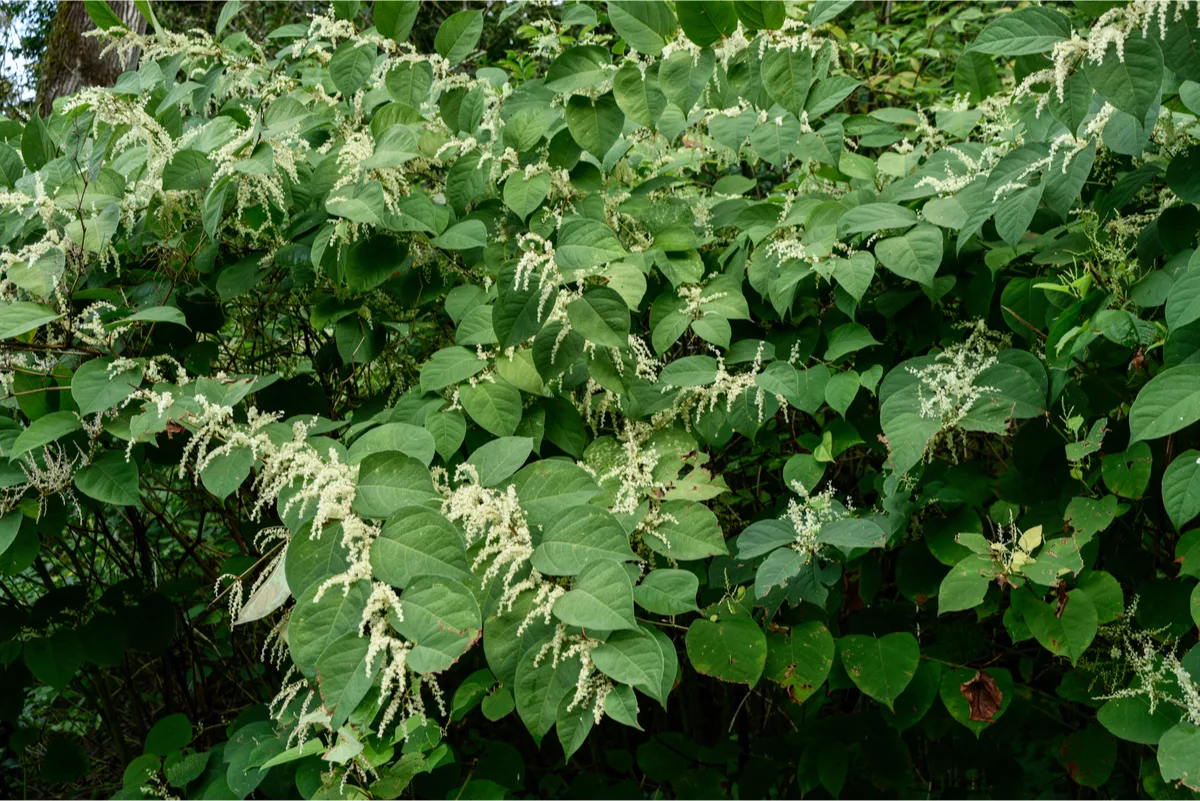
While native plants are beneficial because they have evolved in harmony with their local wildlife (pollinators included), invasive plants are often prolific propagators which form dense monocultures and crowd out native plants. Without a shared evolutionary history, non-native plants are not a good source of nourishment for your local bees, moths and butterflies.
Native plants are also better adapted to the climate conditions in their area which makes them better at dealing with fluctuations in temperatures, precipitation, sunlight strength, pests and diseases. This is not only good for the local ecosystem, but it’s also beneficial to your wallet, since native plants don’t require as much maintenance in the form of irrigation, pesticides and fertilizers.

How do I know which vines are invasive in my area?
Simple, but often not easy: you have to do your research from well-trusted local sources.
First, does your local university have an agricultural extension? University extensions offer practical classes outside the usual college curriculum. But you don’t have to take a class to know what should and shouldn’t go in your garden. Extensions are often a treasure trove of information freely accessible online.
For example, University of Maryland keeps an updated list of native plants, as well as a list of invasive plants in this state. The same goes for other educational institutions, such as Cornell, University of Florida and Pennsylvania State University.
If there isn’t any extension in your area, have a look at the websites of local botanical research and preservation institutions, such as the Royal Horticultural Society in the UK and the Nature Conservancy of Canada.
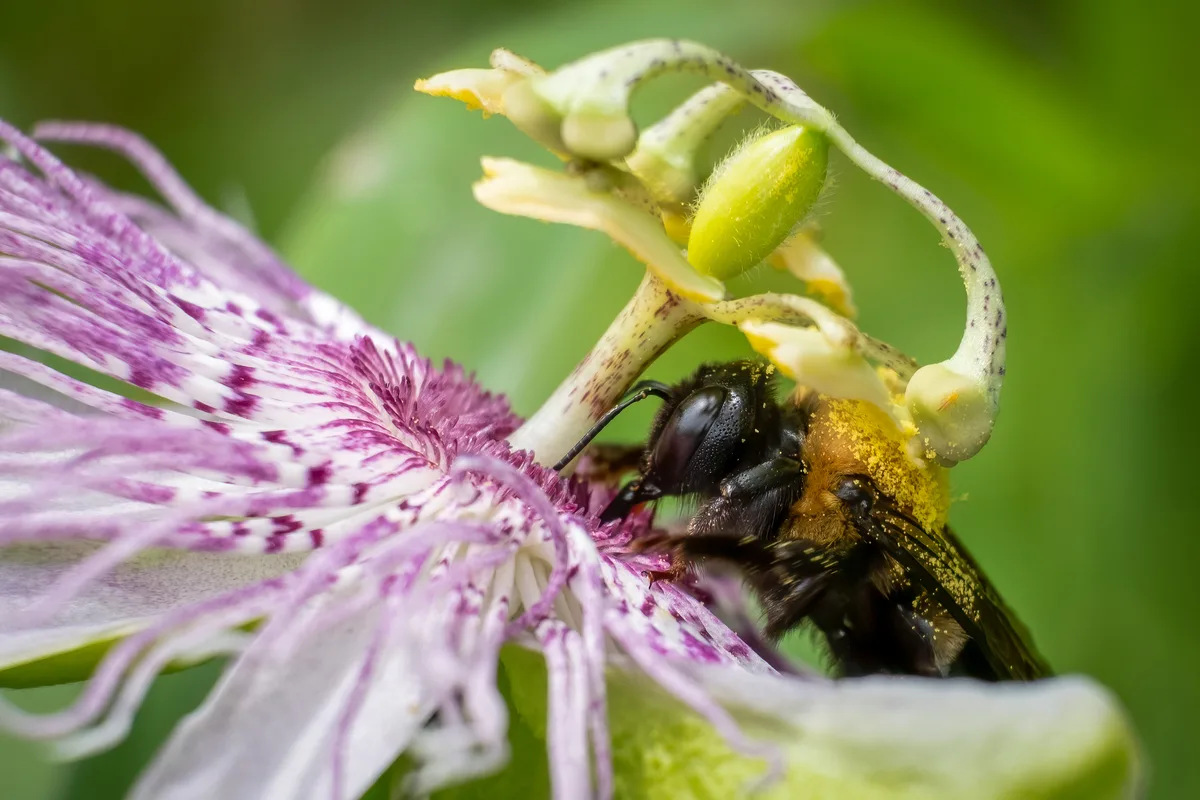
If you can’t decide whether a variety of climbing vines is safe to plant in your area, you can also consult the knowledgeable staff at your local plant nursery. If your nursery sells a particular variety, that’s a good indication that you can get a certain plant established in your area.
Now that you know which plant variety to avoid, how do you know which one is native? Easy, back to the University extension information we go! And if you’re looking for a more extensive source of information, check your local library or Amazon for books on “native plants of [insert your state/region here].”
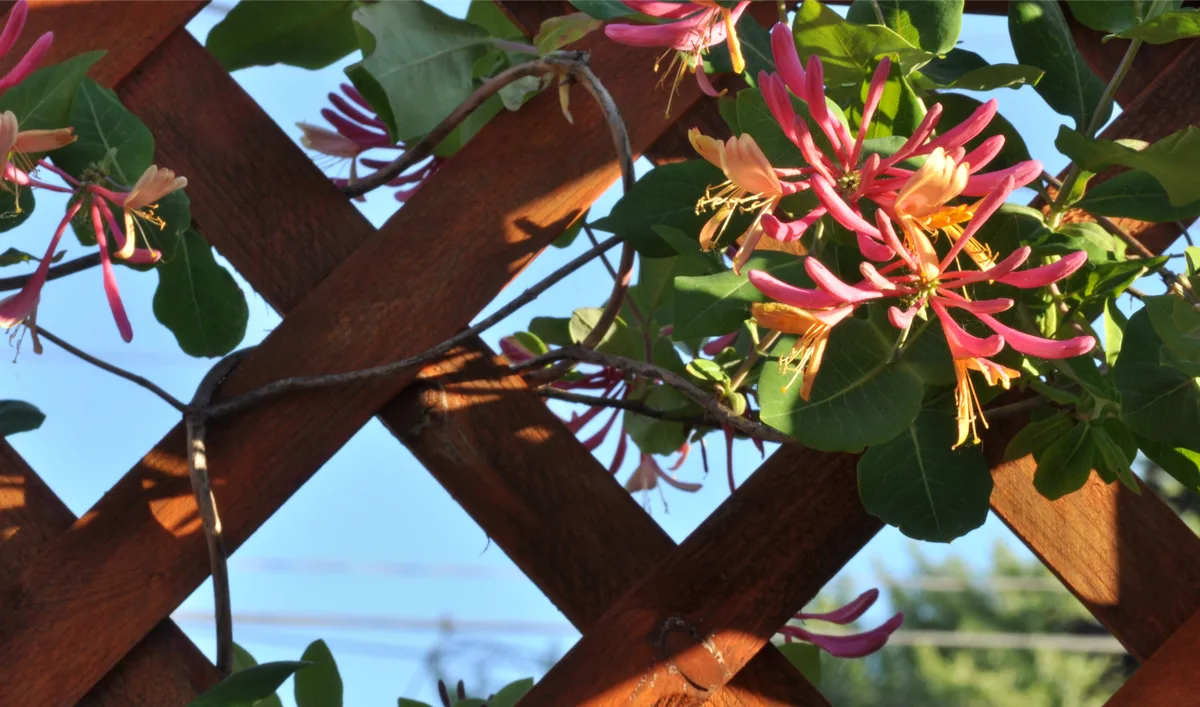
What’s the deal with nativars?
Nativar (also called “near native”) is a term used to describe plants that have subsequently been selected from native plant species or hybridized between two separate plants.
Nativars are bred for certain plant traits over others, such as foliage variegation, resistance to diseases and pests or petal color. While some plant breeders have purely ornamental goals, others have habitat improvement goals, such as lowering a plant’s fertility, thus lowering its capacity to become invasive. So the question of whether nativars are just as beneficial as native plants is still up for debate. (University of Illinois Extension)
Now that you’ve been properly informed, here’s our list of the lushest climbing vines that pollinators will love:
1. Bougainvillea
Look: An evergreen shrubby vine with long-lasting colorful blooms. This plant comes in a wide range of colors, from white, yellow and red to orange and fuchsia; what we call flowers are actually modified leaves, called bracts; the blooms themselves are much smaller and usually encircled by bracts.

Requirements: this plant prefers full sun; in fact, the more sun it gets, the more blooms it will have. Bougainvillea is native to arid climates, so it prefers dry soil and it can tolerate a high salt content and acidic soil. Too much water can promote root rot and cause leaf drop.
Good to know: it’s suitable for drought-tolerant landscaping, but it doesn’t do well in freezing temperatures. It may die back during winter if it gets too cold.
Where to place it: along fences and walls, climbing on espaliers and trellises, in containers and hanging baskets.
Varieties:
‘California Gold’ (papery yellow bracts, perfect for vining, a fast grower that can tolerate partial shade)
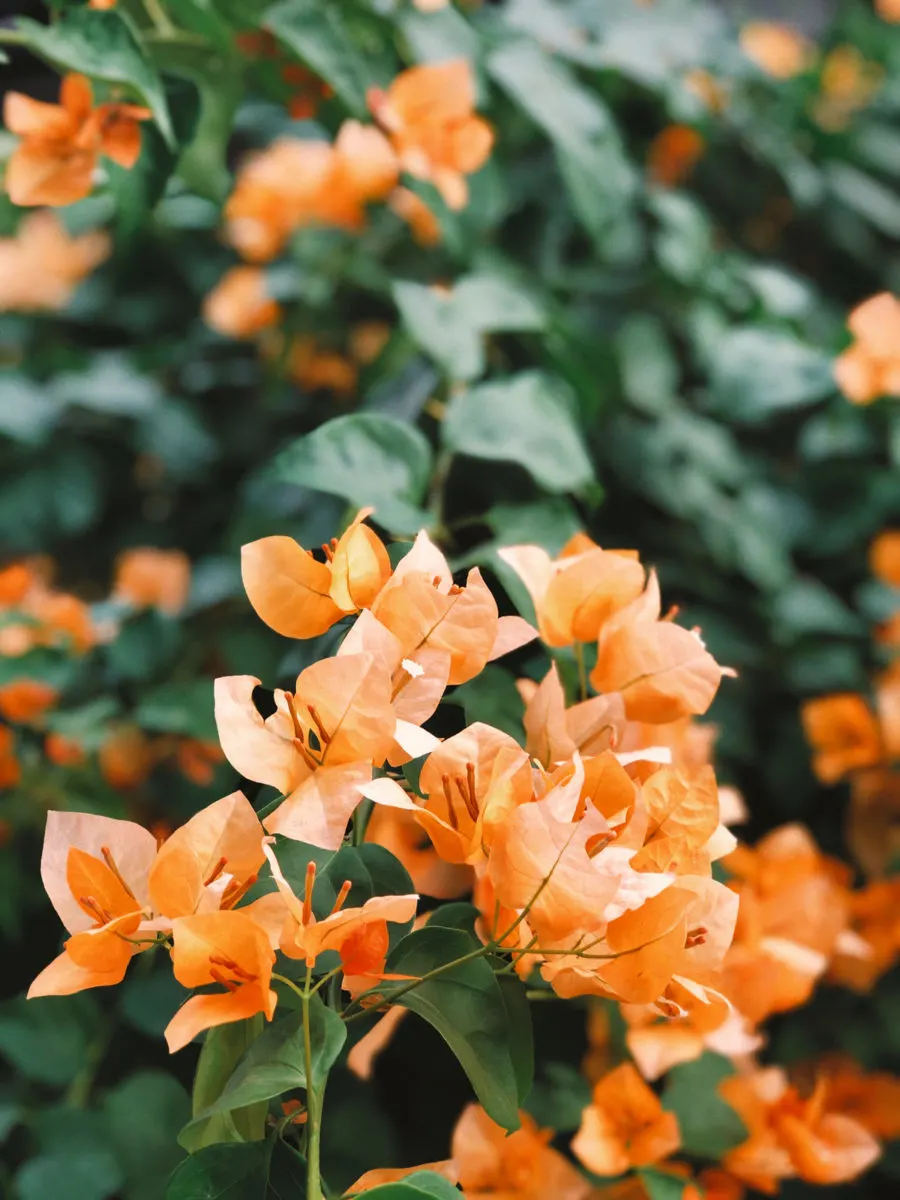
‘Royal Purple’ (a compact plant and a repeat bloomer)
‘Miami Pink’ (the brightest pink bougainvillea)
‘Juanita Hatten’ (red foliage with slight variegation, perfect for hanging baskets)
‘Dr. David Barry’ (pastel pink or lavender, perfect for containers)
‘Raspberry Ice’ (variegated foliage, a gorgeous repeat bloomer)
2. Star jasmine (Trachelospermum jasminoides)
Look: In early spring and summer, it produces clusters of small, white flowers that look like tiny stars. The flowers are very fragrant when in full bloom.

Requirements: Full or partial sun and well-drained soil. Plants that grow in full sun will produce abundant flowers. Star jasmine can tolerate drought, but young plants will struggle when the temperature dips below freezing.
Good to know: Pinching back the tips of the vines will encourage branching.
Where to place it: as an evergreen screen on fences and facades, on lamp posts, trellises or pergolas. Avoid planting it next to trees, as this will make it difficult to prune. It can be planted in containers in cold regions.
3. Classic honeysuckle (Lonicera)

Look: White, yellow, pink, orange, red, apricot, different shades of pastel. There are many different cultivars, hailing from North America, Europe and Asia, so it should be easy to find one that’s native to your region. All varieties of climbing honeysuckle flower in the summer, but the intensity and shade of the color may change throughout the blooming season.
Requirements: Full sun or partial shade. Honeysuckle likes moist soil where excess water drains off quickly.
Good to know: Their nectar-rich flowers attract bees, butterflies and moths. The honeysuckle berries are poisonous to humans, but a rich source of nourishment for birds, especially hummingbirds. Honeysuckle can be deciduous or evergreen, with the deciduous varieties putting out a richer display of blooms.
Where to place it: Climbing honeysuckle can be placed against a vertical structure such as a pergola, wall or trellis. It’s better to install some galvanized tension wire for the honeysuckle to grab on to.
Varieties:
‘Gold Flame’ (purple to deep-pink buds on the outside with golden-yellow hues on the inside)
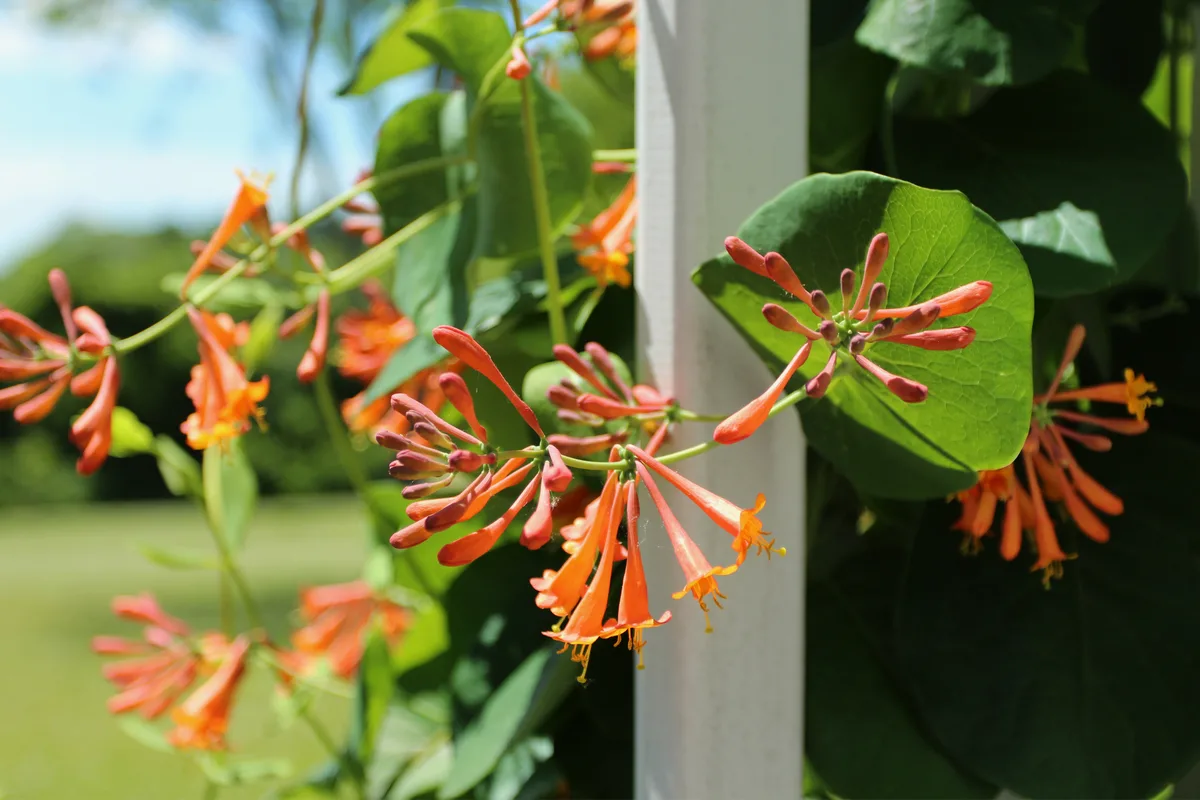
‘Mandarin’ (bright blooms in two shades of orange)
‘Serotina’ (highly scented, creamy-red flowers)
Avoid: Japanese honeysuckle (Lonicera japonica)
4. Moonflower (Ipomoea alba)
Look: Trumpet-shaped white or creamy-white flowers that almost glow at night. Moonflowers are fragrant nocturnal bloomers that close during the day.
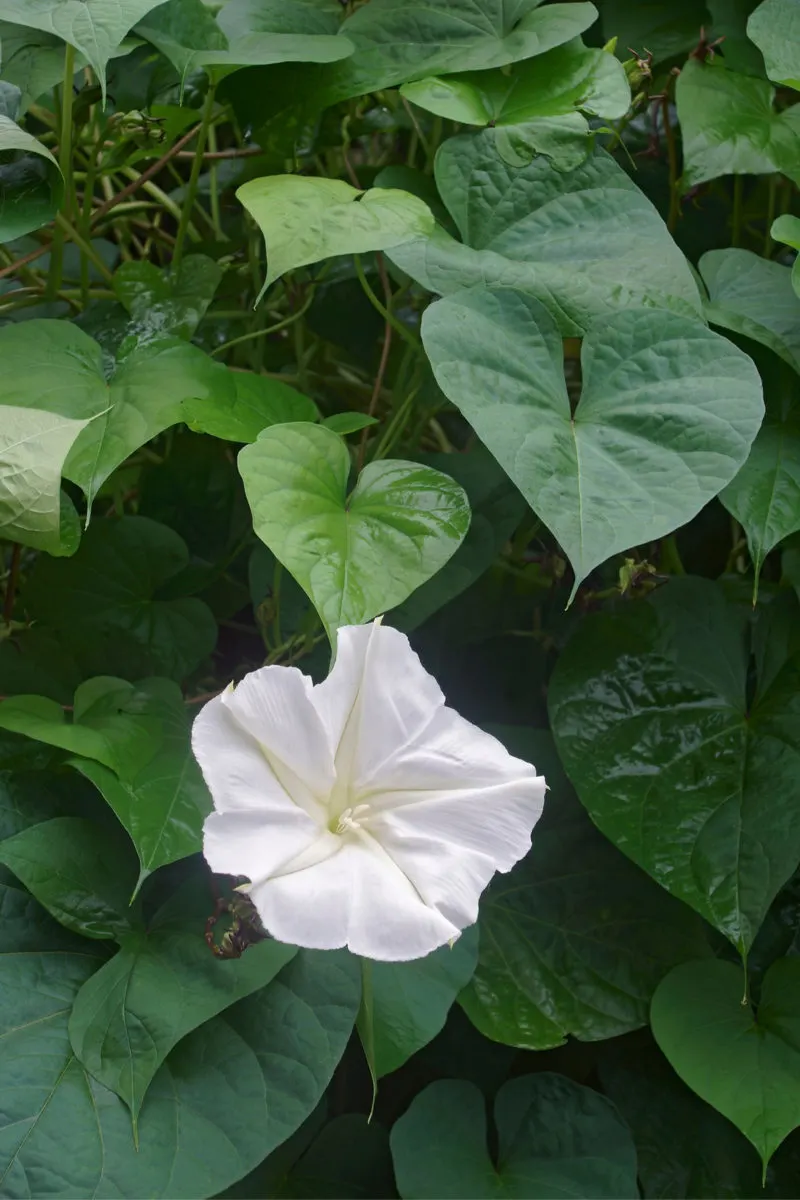
Requirements: Young plants prefer moist soil that’s not too soggy and well-drained soil with a slightly acidic PH level. The more established these vines are, the more drought-resistant they become. They are hardy in warmer climates, but often die back in cold climates. Moonflowers prefer full to partial sun and are susceptible to freezing and hard frost.
Good to know: Since they’re self-seeding, you can just let the seeds fall or relocate them where you want them to grow next year.
Where to place it: They can grow up to eight feet in a single season, so they’re best planted next to a tall structure. They can also be grown in pots or hanging baskets, but they will stay small and may not put out as many blooms.
Varieties:
‘Blackcurrant Swirl’ (white flowers with a pastel purple rim)
5. Trumpet vine (Campsis radicans)
Look: Clusters of blooms in warm tones of red, orange and yellow.
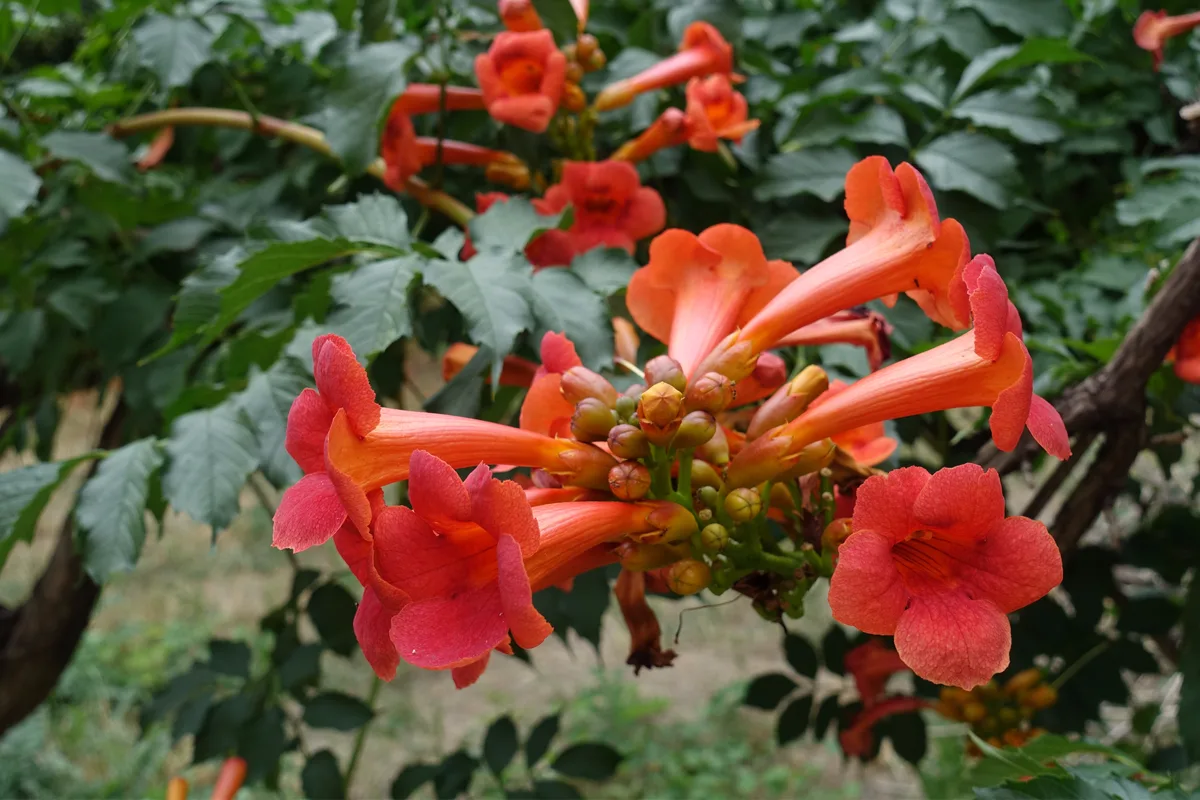
Requirements: For an abundance of blooms, grow your trumpet vine in full sun. When newly planted, this vine needs moist soil to get started; but once established, it’s very tolerant of drought, heat and cold.
Good to know: It may be invasive in some areas, so keep the underground runners well-trimmed. Remove the seed pods before they fully ripen and fall in order to prevent further propagation.
Where to place it: Give it its own sturdy structure to climb on, away from walls or sheds. Avoid placing it on the side of your home, as its aerial rootlets may damage the siding. It grows well on pergolas and trellises.
Varieties:
‘Madame Galen’ (a very popular variety of trumpet vine with large salmon-red blooms)
‘Takarazuka Variegated’ (variegated green-white foliage with clustered orange blooms)
‘Indian Summer’ (a hybrid between American trumpet vine and Chinese trumpet vine)
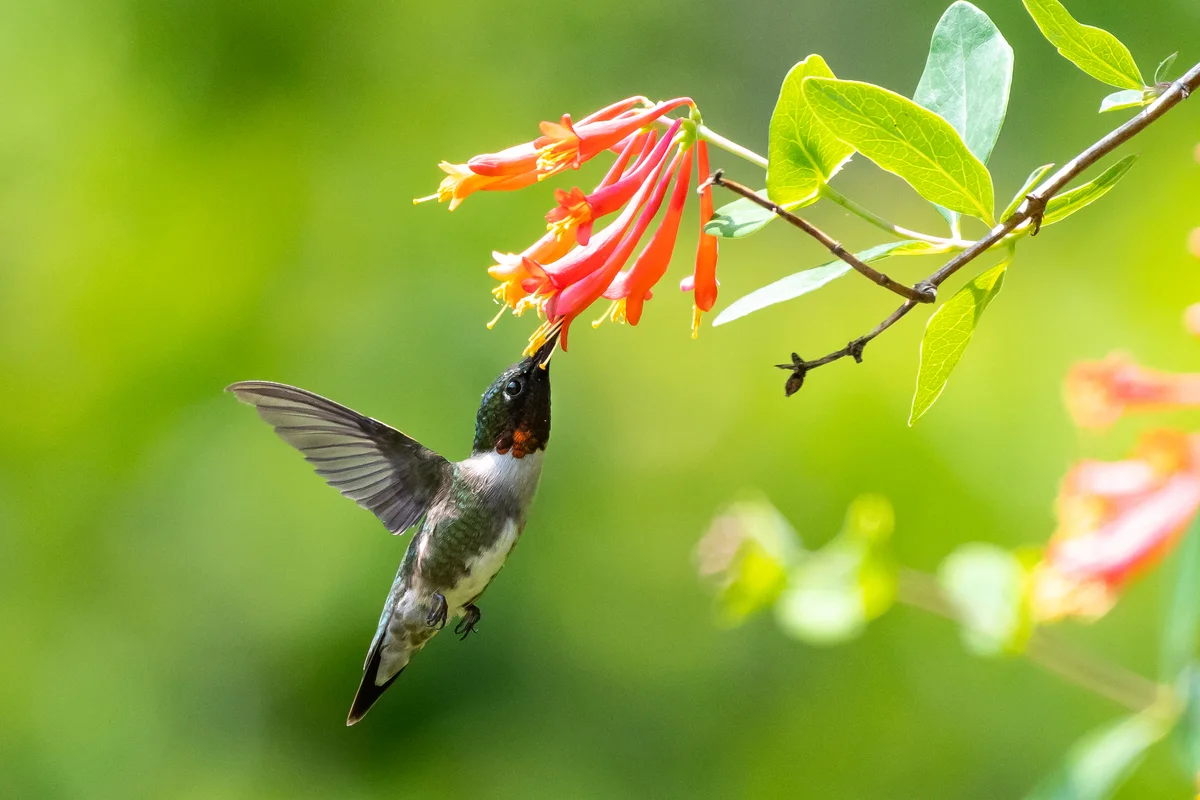
6. Scarlet runner beans (Phaseolus coccineus)
Look: Gorgeous bright-red blooms that attract an abundance of bees and hummingbirds.
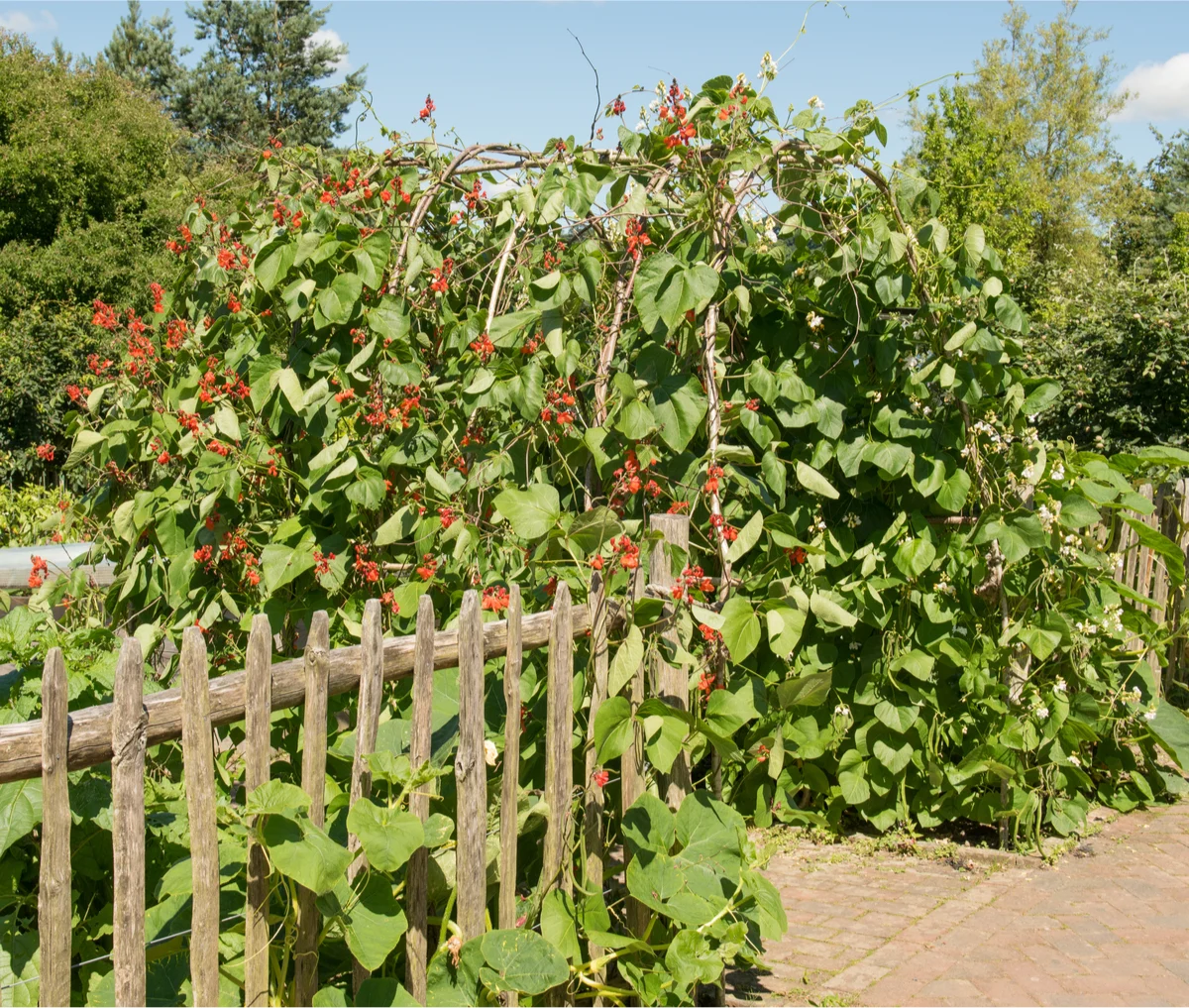
Requirements: Always plant them in full sun and well-draining soil.
Good to know: This plant has several edible parts: the bean pods, the dry beans, the flowers and the tubers. The more you harvest, the more pods the plant produces. You can grow scarlet runner beans from existing tubers in mild climates or from seeds in colder climates.
Where to place it: On an obelisk in your veggie garden, on a trellis, an espalier or a pergola in full sun. This vine can grow up to nine feet tall in colder climates and 15 feet tall in warm climates.
Varieties:
‘Painted Lady’ (an heirloom Victorian variety with red-white or red-pink flowers)
‘White Dutch Runner’ (with white flowers and beans)
‘Pickwick’ (bush beans that mature early, perfect for short growing seasons)
7. Passionflower (Passiflora)
Look: Intricately delicate flower structure with white, purple or creamy blooms.
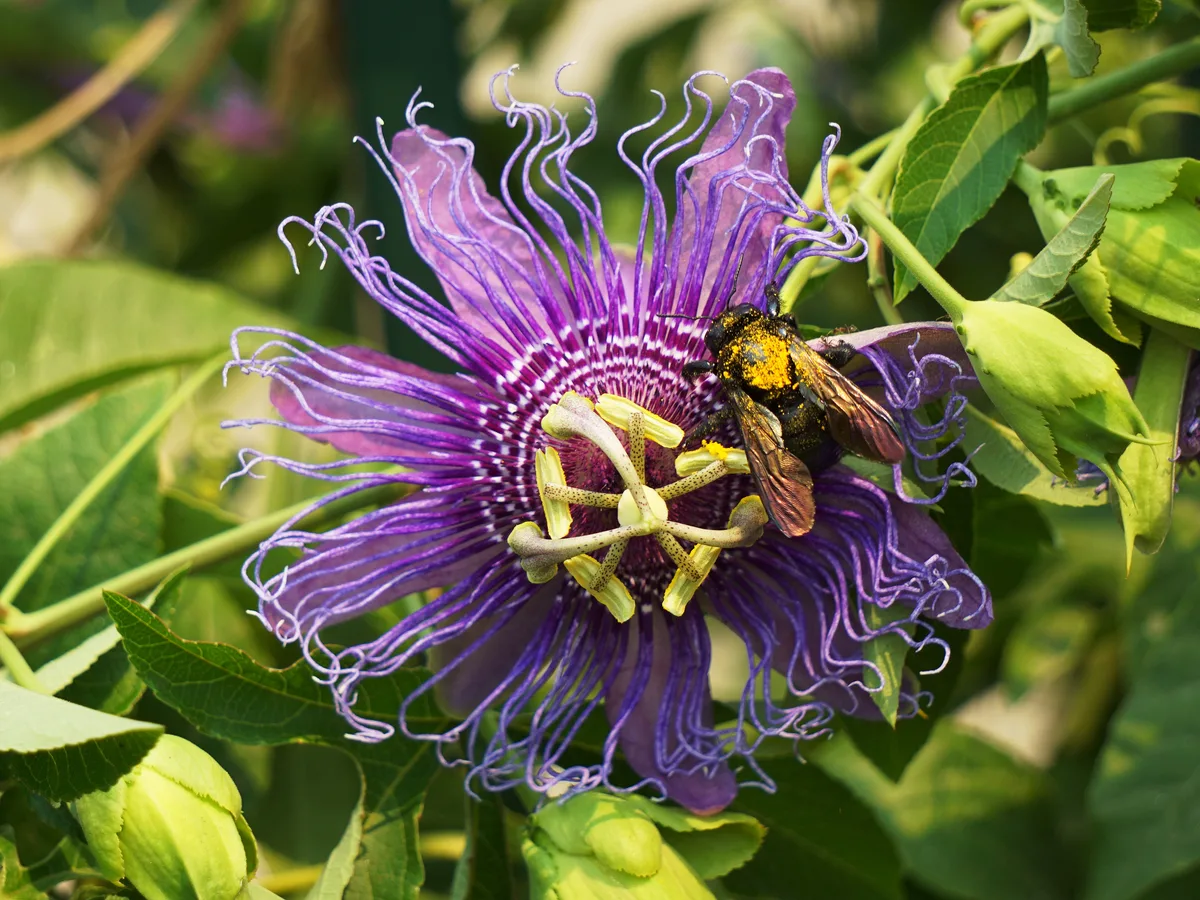
Requirements: Passionflower prefers well-drained soil in full sun or partial shade, sheltered from strong wind. Most varieties need winter protection.
Good to know: The fruit of the passionflower is edible. However, it can be hollow and tart if the plant didn’t have optimal growing conditions (such as enough water and full sun).
Where to place them: Next to a sunny wall or on a pergola, gazebo or galvanized tension wire structure. You can also grow them in large containers, but they won’t bloom as vigorously.
Varieties:
‘Maypop’ (deep-purple frilly flowers, native to North America)
‘Victoria’ (dark-purple flowers with white tips, blooms later in the season)
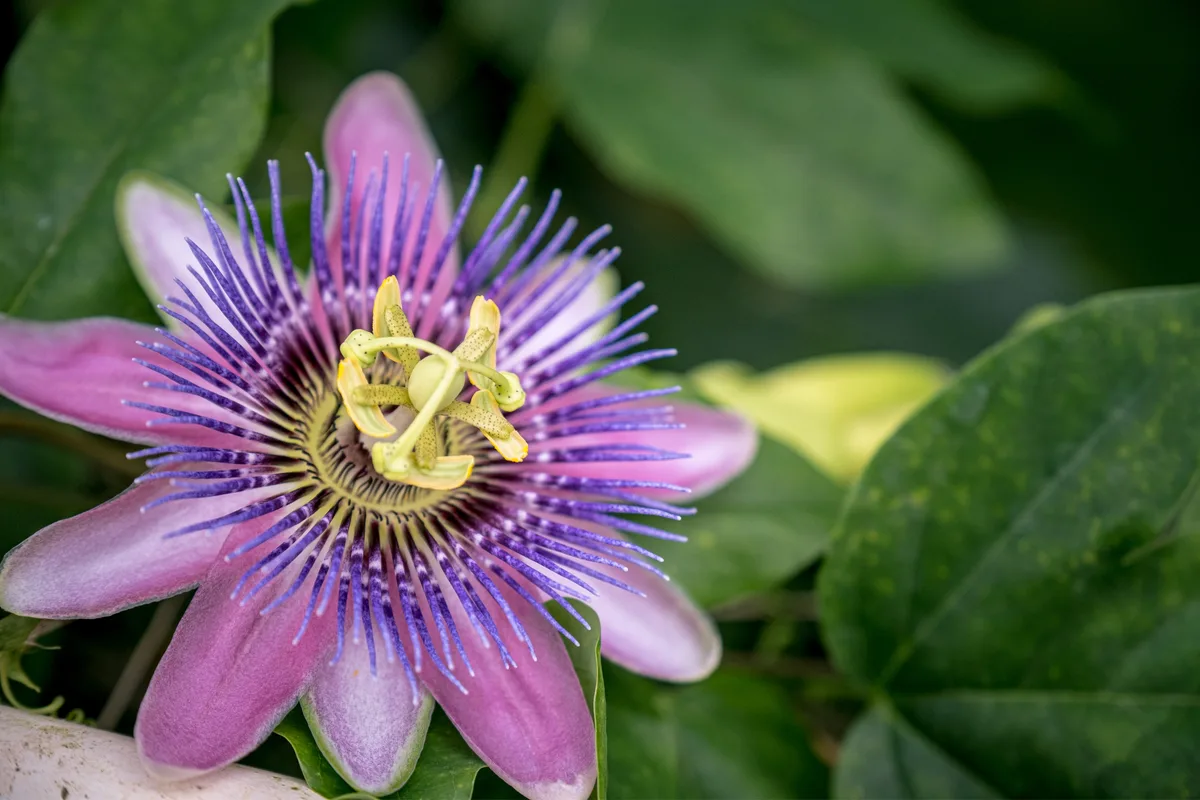
‘Constance Elliot’ (creamy-white flowers, one of the most common varieties of passionflower in North America)
‘Inspiration’ (fragrant large deep-purple blooms, a favorite with butterflies)
8. Clematis
Look: There are about 300 species of clematis, with more cultivars brought to the market every year, so there is a huge variety of colors, heights and blooms to choose from.
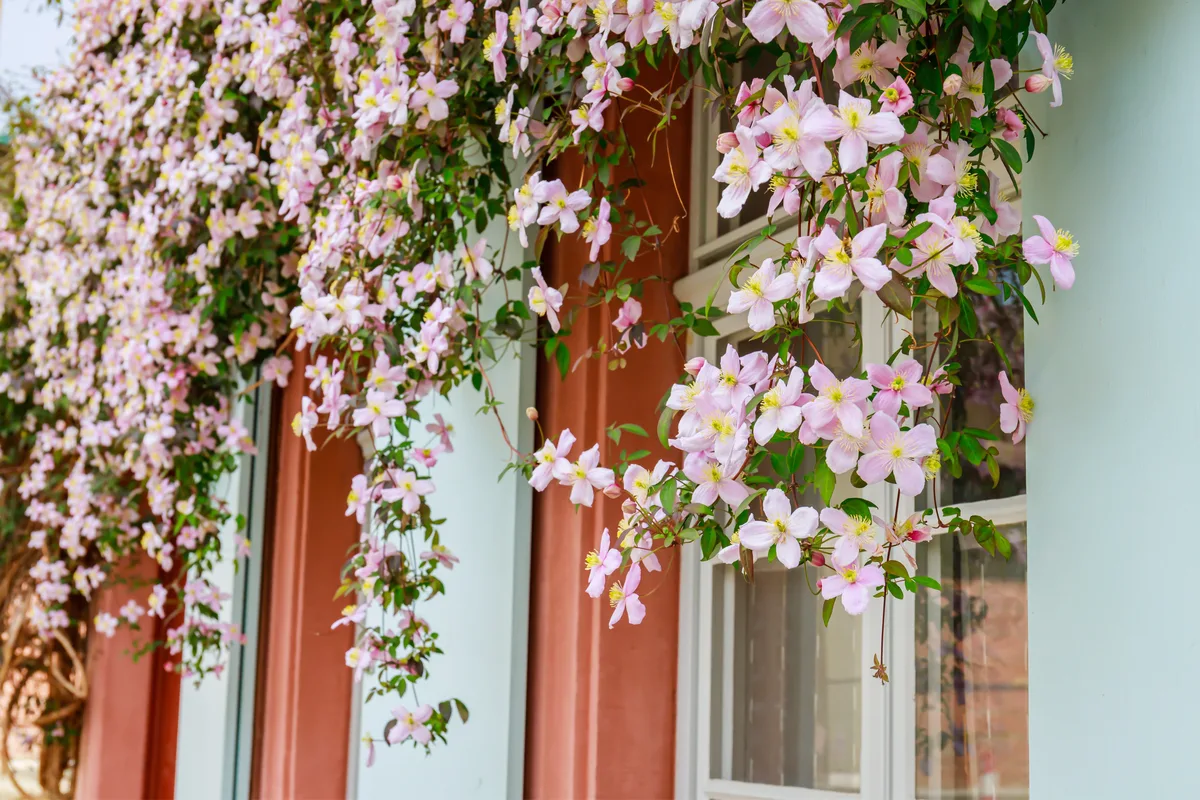
Requirements: Although clematis can tolerate part shade, it’s best to grow it in full sun if you want to maximize flower production. Clematis like well-drained rich soil and don’t like being moved. They like a constant temperature around the roots, so mulching is advised.
Good to know: There are three groups of clematis (A, B and C) with different pruning requirements. Group A produces flowers on last season’s growth. Group B produces flowers on both old and new growth. Group C produces flowers on new growth. Always check the label to know what kind of clematis you have before you prune it.
Where to place it: along a fence, a stone wall or a pergola; smaller varieties can also be placed along other sturdier vines.
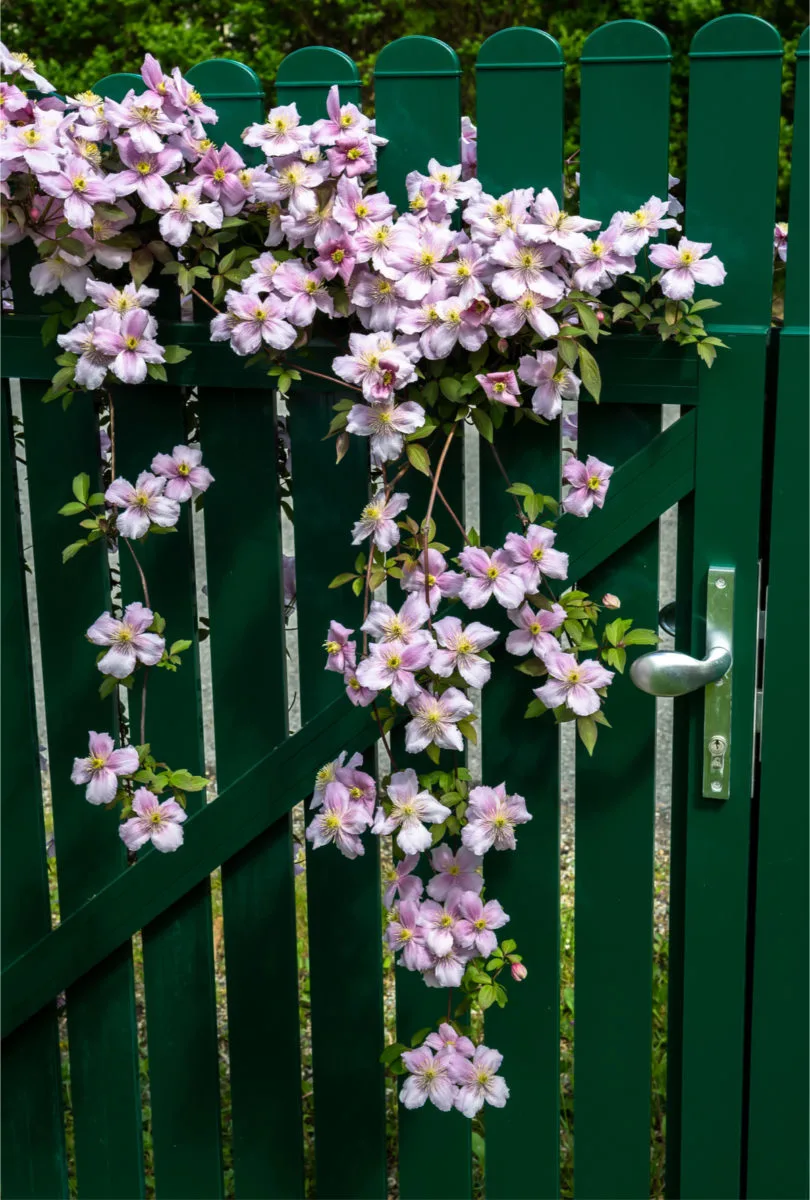
Varieties:
‘Miss Bateman’ (early-summer white blooms with chocolate-red stamens)
‘Niobe’ (gorgeous burgundy blooms, perfect for a romantic garden)
‘Jackmanii’ (deep purple medium-sized blooms, one of the most popular varieties of clematis, often a double bloomer)
‘Sweet Autumn’ (small delicate clusters of white flowers that bloom late into the fall)
‘Tangutica’ (a vigorous climber with small lantern-shaped flowers)
9. Mandevilla
Look: White, red, pink or burgundy blooms. Often bicolor flowers.
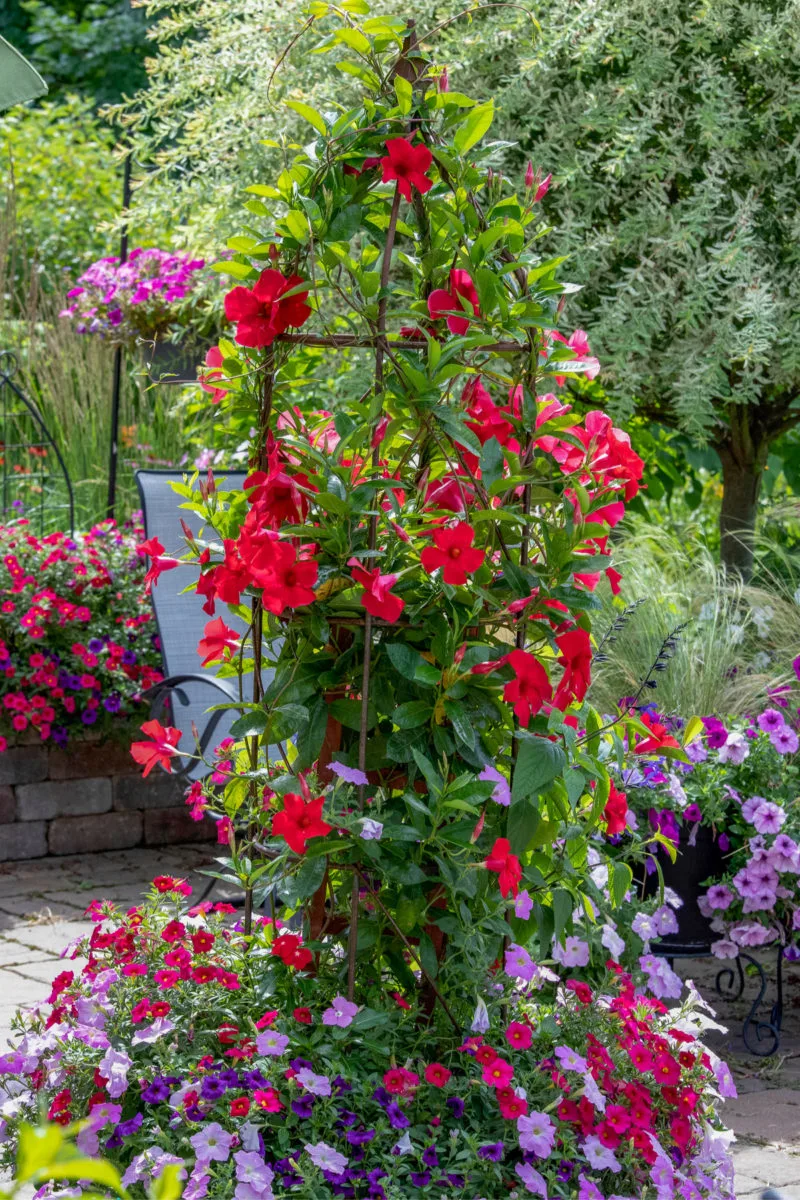
Requirements: Mandevilla thrives in full sun or part shade as long as it’s planted in well-drained sandy soil. It doesn’t do well in temperatures below 45-50°F (around 7-10°C). This vine is an evergreen in mild climates, but is considered a summer annual in climates with cold winters.
Good to know: You can overwinter mandevilla indoors in a sunroom or conservatory.
Where to place it: On a trellis, pergola or obelisk. You can also grow it in large pots (with added vertical supports) to make it easier to move at the start of the cold season.
Varieties:
‘Alice du Pont’ (trumpet-like ice-pink blooms, prefers partial shade)
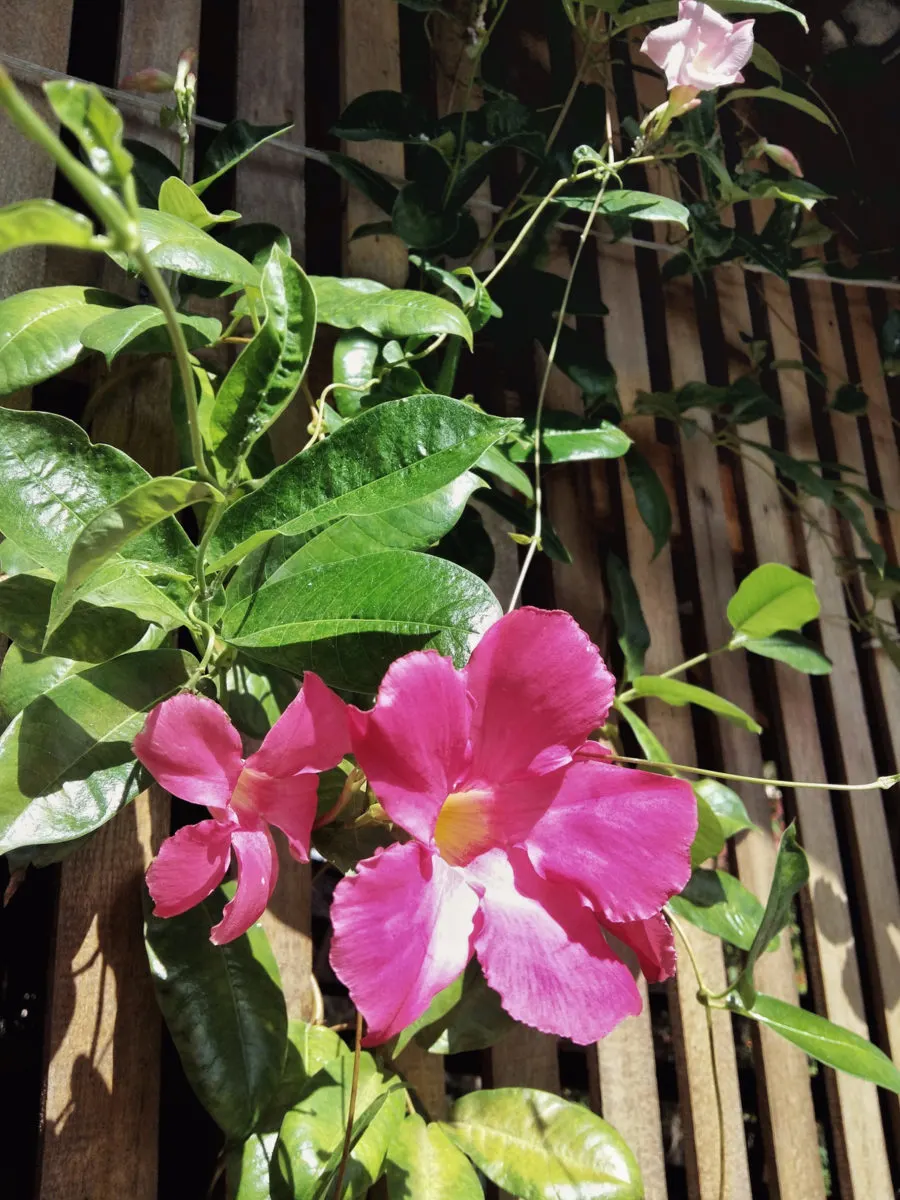
‘Splendens’ (trumpet-shaped pink flowers that can grow up to 10-15 feet tall)
‘Red Riding Hood’ (deep-red flowers, grows well in containers)
‘Fire & Ice’ (has beautiful variegated leaves, but may be quite sensitive to changes in temperature)
10. Butterfly vine (Mascagnia macroptera)
Look: Clusters of delicate bright yellow flowers that resemble small orchids. This also gives the plant the nickname “yellow orchid vine.”
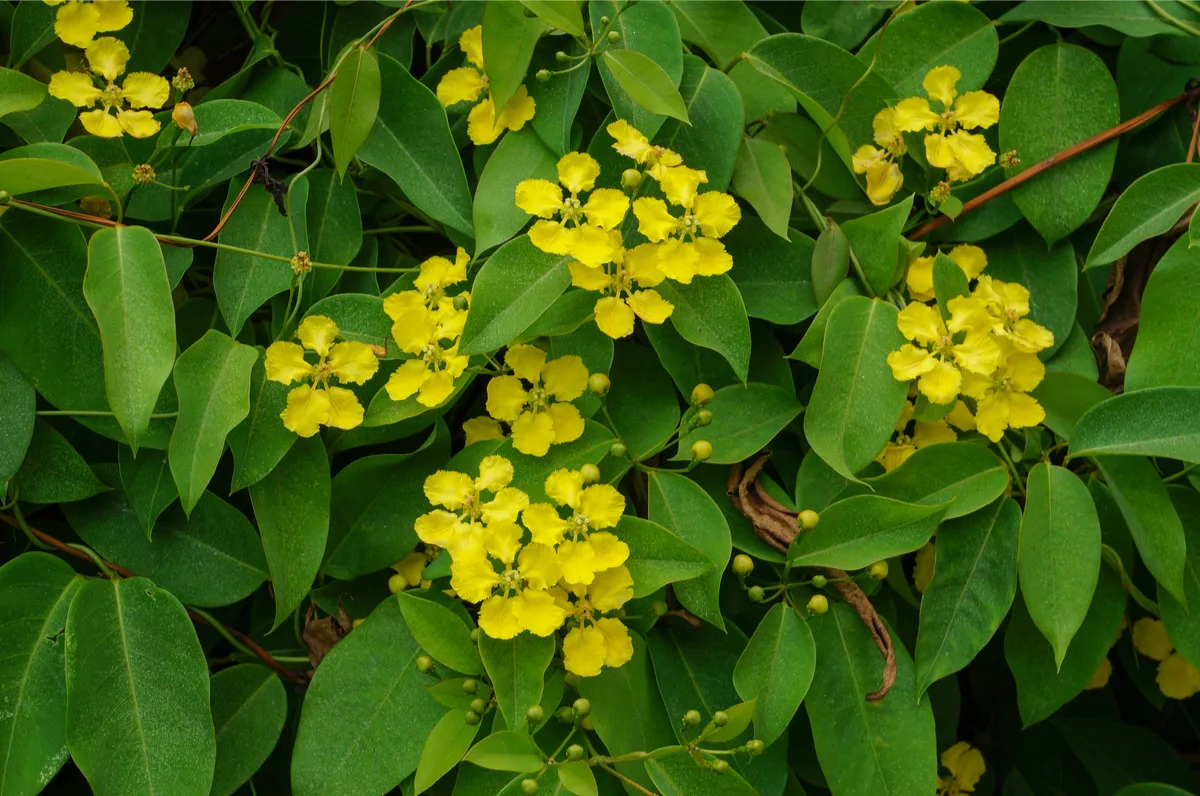
Requirements: Plant it in full sun or part sun in rich well-drained soil. Water it regularly in late spring through mid-summer. The butterfly vine is moderately drought-tolerant once established. In Northern climates, the plant will die back in the winter and resprout in the spring.
Good to know: The fruit resembles a brown butterfly, so another common name for this plant is “butterfly vine.”
Where to grow it: Along walls, on arbors, mailboxes, light posts and gazebos. If it’s not trained vertically, it will grow as a shrub or a groundcover.
